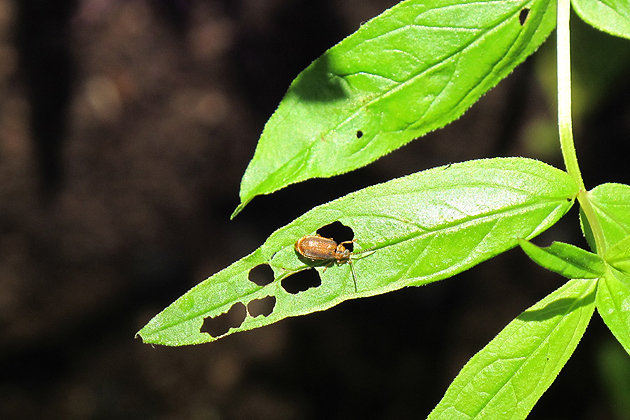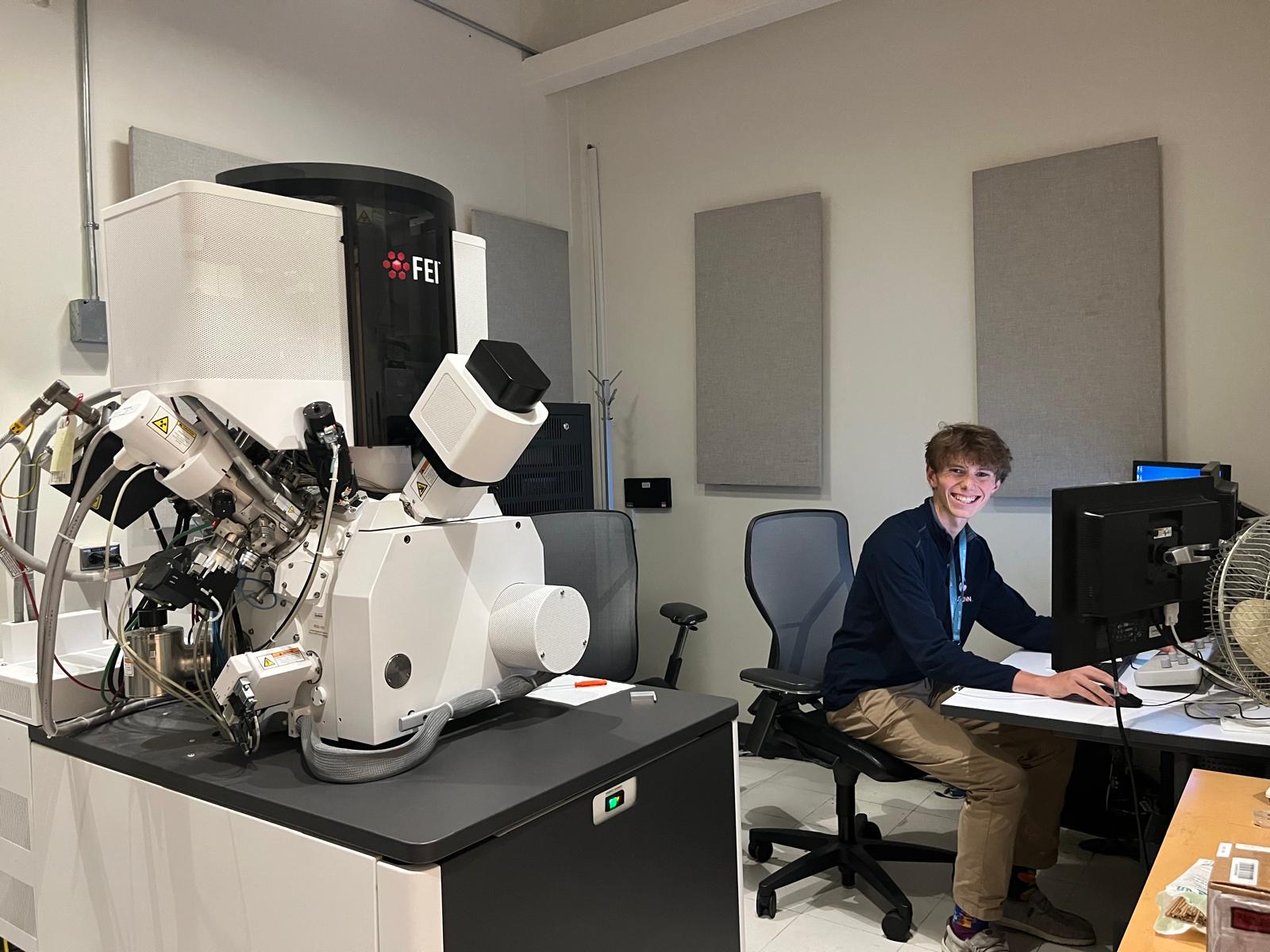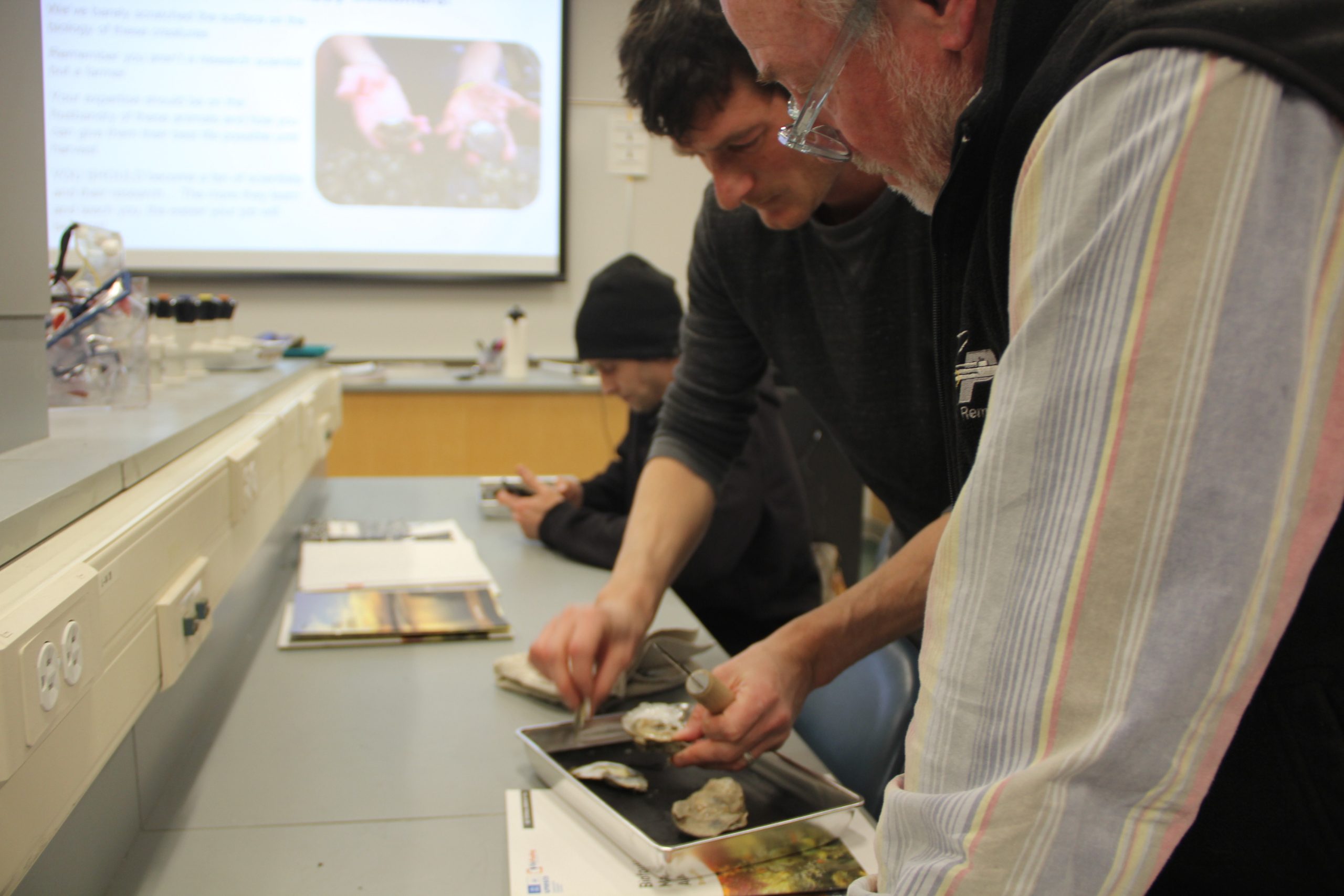In the battle to stay one step ahead of unwanted plant and insect visitors that compete for space with native species and threaten the state’s $1 billion horticulture industry, UConn’s extension specialists are on the front line of defense. And the weapons in their arsenal range from hand-pulling to biological control.
Mile-a-Minute Vine
Control of mile-a-minute vine (Persicaria perfoliata) is one example. This annual, trailing vine first made its appearance on the Connecticut landscape about 15 years ago. Because the plant often grows along the edges of woodlands, wetlands, stream banks, and roadsides, it is difficult to control by mechanical means such as digging or mowing; pulling it out by hand is the most effective non-chemical means of getting rid of it.

Senior cooperative extension educator Donna Ellis and research assistant Logan Senack, both of the Department of Plant Science and Landscape Architecture, invite interested citizens to ‘pulling parties’ at the site of an outbreak in the Mohegan State Forest, on the banks of the Shetucket River. Volunteers pitch in to pull the persistent vine out by its roots. They come from many different walks of life, but share an interest in the environment and a desire to preserve the landscape for native species.
“I’m here because I want to do something to help the environment, “says Jean Jerbert, a retired physical therapist who has made several trips to the site from her home in Groton, Conn. “This is something I can do that makes a real difference. You can see the change as you pull out the vines.”
While mile-a-minute vine thrives in rugged terrain, it occasionally pops up in urban and suburban landscapes as well. In the same week as a recent pulling party in Sprague, Senack made a trip to Madison, Conn., where a homeowner thought she recognized the vine in her yard. Senack confirmed the identification and answered questions about the invasive plant for members of the local conservation commission, as well as members of a local garden club who had been invited to stop by. Then everyone went to work pulling out every last remnant of the vine.
Senack says, “It’s fairly common for us to identify a plant when someone sends in a photograph, but to make sure, we also do on site visits. The homeowner in Madison had attended a seminar Donna did for our Master Gardener Program where she talked about invasive plants, including mile-a-minute. That’s when she first realized she had some of the vine growing in her own yard and sent pictures to us for confirmation.”
Organic Pest Control

Ellis also spent time recently in the western part of the state, orchestrating the release of beneficial parasitic wasps to control invasions of lily leaf beetles. These beetles are relatively new to the state, having first arrived about a dozen years ago, and they lay waste to lilies in the genus Lilium, which includes Asiatic, Easter, and Oriental varieties. (Day lilies, which belong to the genus Hemerocallis, are not true lilies and so do not attract the voracious beetle.)
“The lily leaf beetle is just devastating, “Ellis says, “and while people often pull off and destroy the adult beetles, the larvae can be pretty disgusting and hard to eliminate as they carry their excrement on their backs. That’s where the wasps are so beneficial; they are a natural means of eliminating the beetles.”
Ellis explains that the wasps complete their life cycle by developing within lily leaf beetles. “This is an efficient biological control system that avoids the use of pesticides,” she says, “and this year we have introduced the beneficial wasps into nine private and public gardens throughout the state.

Petie Reed, co-owner of the nursery Perennial Harmony in Waterford, Conn., appreciates the hands-on help from Ellis. “Her visits are worth more than a million web pages,” she says, “because she’ll say ‘here look at this,’ or she’ll be able to tell us whether a particular insect is friend or foe. We’re an organic nursery, and Donna takes a lot of the guesswork out of our decision-making.”
Reed points out that nurseries are not only an economic boon to the state, they can also be a source of some of the very pests that the Department of Plant Science and Landscape Architecture and the state Department of Energy and Environmental Protection are trying to eliminate. “We send people home with plants,” she says, “and we want to make sure they’re not taking any unwanted visitors with them. We don’t use pesticides, so everything we learn about biological pest control [from UConn] gets passed on to consumers in the form of disease- and pest-free plants and shrubs.”
Welcome the Galerucella Beetle

Back on campus, the shores of Mirror Lake provide an example of another efficient means of biological control. The invasive plant purple loosestrife (Lythrum salicaria) seems to be everywhere, and although its magenta color may look attractive, when it moves into wetlands it eliminates native plants such as cattails, sedges, bulrush, and ferns. This results in loss of habitat for wildlife such as migrating birds.
While the plant can be pulled or mowed, biological control using the Galerucella beetle is a sustainable, cost-effective, and long-term method of reducing its spread. The beetles feed on the leaves, stems, and shoot-tips of the purple loosestrife.

Use of the beetles has been approved by both the state and federal governments, and the Department of Plant Science and Landscape Architecture has a thriving Beetle Farmer Program that provides complete information about raising and releasing this tiny, beneficial creature.
The program not only invites individuals to become beetle farmers, it has also been a big hit in classrooms and with scout and conservation groups, Ellis says. “We started the program in Connecticut in 2004, and it has been a great way of introducing people to biological methods of controlling unwanted species. It’s something that’s fun and useful at the same time, and the results are really promising. You can see this along the shore of Mirror Lake on the Route 195 side. We have native plants that are thriving, and a purple loosestrife population that’s well under control.”



